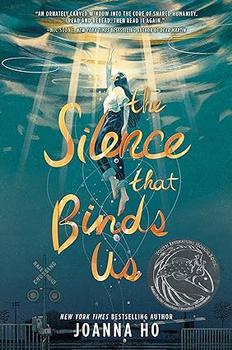Summary | Excerpt | Reviews | Beyond the Book | Read-Alikes | Genres & Themes | Author Bio

This article relates to The Silence that Binds Us
May Chen, the main character in Joanna Ho's The Silence That Binds Us, explores her identity through her family heritage, including the experiences of her paternal grandmother, who arrived in Hong Kong as a young refugee from mainland China. Faced with formidable hardships during the Cultural Revolution, she left everything behind and swam across four miles of shark-infested waters in the dead of night. While itself fictional, this description reflects the historical reality of about one million Chinese refugees who risked their lives to make similar crossings into Hong Kong between the 1950s and 1980s.
Dapeng Bay (aka "Mirs Bay"), where May's grandmother crossed, was one of three established escape routes to Hong Kong. The alternatives to crossing Dapeng Bay from the east were to sneak through the land border from the north or to swim across Shenzhen Bay (aka "Deep Bay") from the west. Each option bore its own perils. Dapeng Bay, while absent of border patrols, could take more than six hours to cross and was notorious for its sharks and turbulent waters. If night conditions were favorable, Shenzhen Bay could possibly be cleared in just over four hours, though there were other dangers to consider: the patrolling Chinese gunboats and shallow oyster beds that would leave gashes in the bodies of swimmers. It was a daily occurrence for the marine police of Hong Kong to find the lifeless bodies of swimmers who had succumbed to hypothermia or exhaustion. Lastly, the heavy presence of soldiers stationed at the land border all but ensured that only a handful of refugees who chose this most direct route would evade capture.
The swimmers who braved the dangerous crossing from the east or west were often in their late teens or early 20s. They came from all walks of life, with students, laborers and soldiers among them. Lee Yat-keung (featured in the video below) was one swimmer who crossed Shenzhen Bay in 1979, navigating past the floating bodies of drowned swimmers in the darkness of the waters. Lee recalls feeling he had come "back from the dead." Two of his closest childhood friends drowned while making the same attempt.
Chan Hak-chi, a native of the capital of Guangdong Province, was dating his now-wife Li Kit-hing when the two made the decision to flee the mainland. Together, they practiced swimming six miles in the Pearl River for months before choosing one night in July of 1973 to make the crossing via Dapeng Bay. On the same night, the area was hit by Typhoon Dot. After spending six hours in the chaotic waters with a rope keeping their bodies linked, Chan and Li made it to safety in Hong Kong. Life in the new city was difficult, but they took whatever manual labor jobs were available. By 1984, they had their own small business and were raising a family. The now elderly couple still consider the night of their crossing as the official date of their wedding, with the typhoon as their witness and the waves as their guests.
Chan and Li were part of the "sent-down youth" (or "educated youths"), a term referring to the approximately 17 million students, ranging from the elementary to university level, who were mandated by Mao Zedong during the Cultural Revolution to leave their families in the cities and relocate into the countryside to perform hard labor. Young people who fled China, desperate to leave poverty and grueling work conditions, fueled major refugee booms in Hong Kong during that time. Other factors for escape included restrictions on free speech and political persecution.
Filed under People, Eras & Events
![]() This "beyond the book article" relates to The Silence that Binds Us. It originally ran in August 2022 and has been updated for the
December 2023 paperback edition.
Go to magazine.
This "beyond the book article" relates to The Silence that Binds Us. It originally ran in August 2022 and has been updated for the
December 2023 paperback edition.
Go to magazine.
Your guide toexceptional books
BookBrowse seeks out and recommends the best in contemporary fiction and nonfiction—books that not only engage and entertain but also deepen our understanding of ourselves and the world around us.